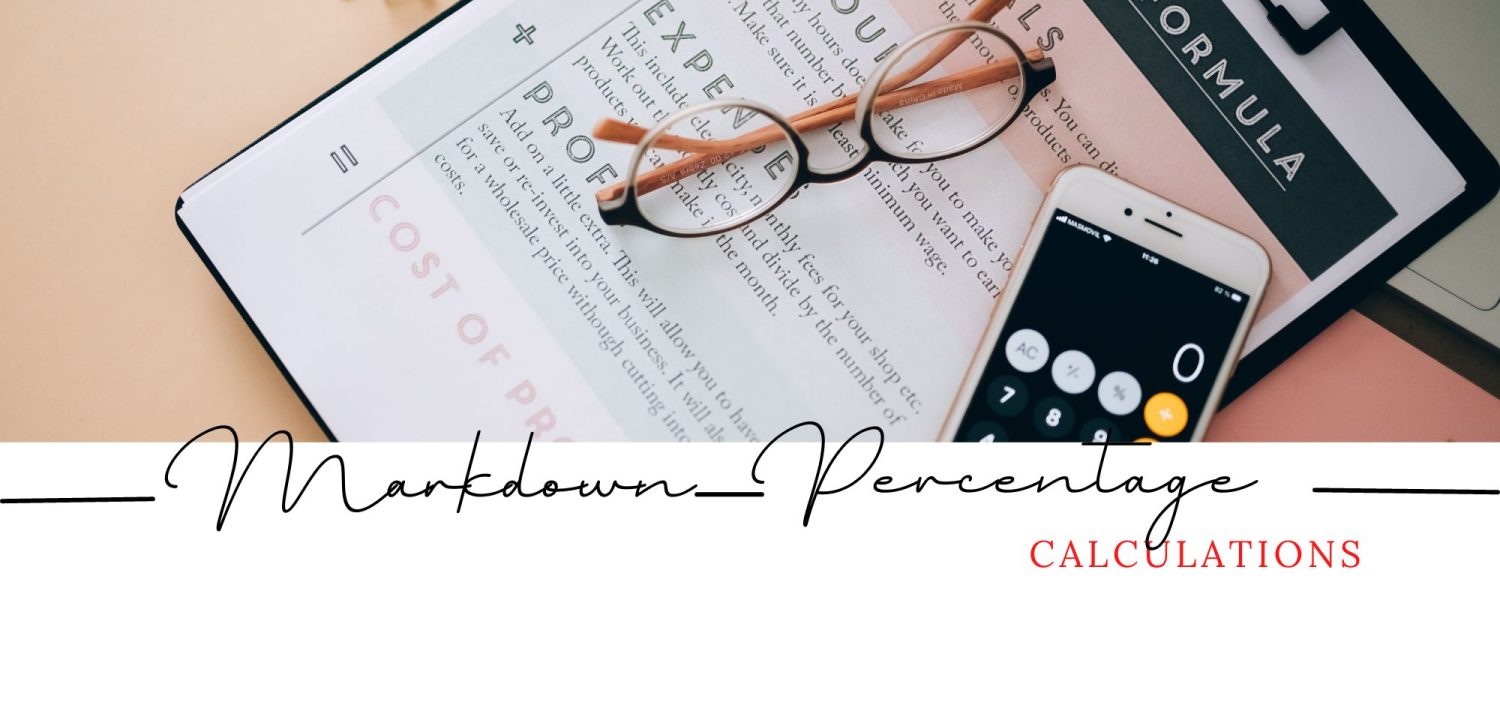Markdown Percentage Calculations
How to Calculate Markdown Percentage
Markdowns are an essential tool in the retail industry for selling products that are not selling well or need to be cleared out of inventory. Calculating the markdown percentage is critical to ensure that the retailer is not losing money and that the discount is attractive enough to generate sales. In this article, we’ll discuss how to calculate markdown percentage.
Step 1: Determine the Original Price The first step in calculating the markdown percentage is to determine the original price of the product. This is the price at which the product was originally sold before the markdown.
Step 2: Determine the Sale Price The next step is to determine the sale price, which is the price at which the product will be sold after the markdown. This price should be set based on market demand, competition, and the product’s perceived value to customers.
Step 3: Calculate the Discount After determining the sale price, subtract the sale price from the original price to calculate the discount. This represents the amount by which the original price has been reduced.
- Discount = Original price – Sale price
Step 4: Calculate the Markdown Percentage Once the discount has been calculated, the markdown percentage can be determined. This is the percentage by which the original price has been reduced.
- Markdown percentage = (Discount / Original price) x 100
For example, let’s say the original price of a product is $100, and it is being sold at a discounted price of $80. The discount would be $20 ($100 – $80), and the markdown percentage would be 20% ((20 / 100) x 100).
Therefore, the markdown percentage for this product is 20%.
Markdown percentages are crucial to the retail industry, as they allow retailers to sell products that are not selling well or have become obsolete. By following these simple steps, retailers can determine the appropriate markdown percentage and ensure that they are not losing money. It’s important to consider factors such as market demand, competition, and the product’s perceived value to customers when setting the discount percentage.
Examples of Markdown Percentage Calculations
Markdown percentage is a useful tool for retailers to sell their products and get rid of the inventory that isn’t selling well. In this article, we’ll provide some examples of how to calculate markdown percentage.
Example 1: A sweater that was originally priced at $60 is now being sold at a discount of $15. What is the markdown percentage?
- Discount = Original price – Sale price = $60 – $45 = $15
- Markdown percentage = (Discount / Original price) x 100 = (15 / 60) x 100 = 25%
- Therefore, the markdown percentage for the sweater is 25%.
Example 2: A pair of shoes that were originally priced at $120 are now being sold at a discount of 30%. What is the sale price?
- Discount percentage = 30%
- Discount = Original price x Discount percentage = $120 x 0.30 = $36
- Sale price = Original price – Discount = $120 – $36 = $84
- Therefore, the sale price for the shoes is $84.
Example 3: A jacket that was originally priced at $150 is now being sold at a discount of 20%. What is the markdown amount?
- Discount percentage = 20%
- Discount = Original price x Discount percentage = $150 x 0.20 = $30
- Therefore, the markdown amount for the jacket is $30.
Example 4: A shirt that was originally priced at $50 is now being sold at a discount of $10. What is the markdown percentage?
- Discount = $10
- Markdown percentage = (Discount / Original price) x 100 = (10 / 50) x 100 = 20%
- Therefore, the markdown percentage for the shirt is 20%.
Example 5: A pair of jeans that were originally priced at $80 are now being sold at a sale price of $56. What is the markdown percentage?
- Discount = Original price – Sale price = $80 – $56 = $24
- Markdown percentage = (Discount / Original price) x 100 = (24 / 80) x 100 = 30%
- Therefore, the markdown percentage for the jeans is 30%.
In conclusion, markdown percentage calculations are essential for retailers to determine the appropriate discount for their products. By following the examples provided above and using the markdown percentage formula, retailers can ensure that they are setting the right discounts and making a profit. It’s important to consider factors such as competition, market demand, and production costs when setting the markdown percentage.




